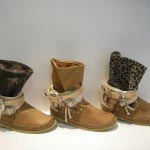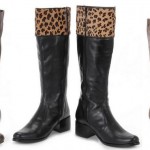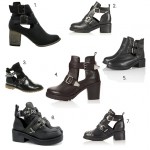Bota Indiana

Existem muitos tipos de botas, mas uma das mais confortáveis é a bota indiana. Saiba mais sobre estas botas e como usar. Confira ainda alguns modelos de bota indiana. Chegado o tempo mais frio, não há calçado que uma mulher … Continuar a ler
Botas Country

Chegado o tempo mais frio, não há acessório que uma mulher goste mais que umas botas. Quentes, confortáveis, práticas e muito bonitas, umas botas bem escolhidas dão um ar fantástico a qualquer look. Existem muitos tipos de botas por onde … Continuar a ler
Sapatos com Brilho

Uma das tendências em sapatos mais em voga nos últimos tempos são os sapatos com brilhos. Através da aplicação de glitter, os sapatos ganham maior glamour e requinte, dando ao look feminino um toque bem especial. Saiba mais sobre sapatos … Continuar a ler
Salto Alto com motivos Florais

Na hora de compor um look mais glamouroso e sensual, o salto alto é quase uma escolha obrigatória. Mas esta peça de calçado não se limita ao uso mais formal ou festivo. Muitas mulheres fazem do salto alto uma peça … Continuar a ler
Bota rasteira

Um dos acessórios preferidos das mulheres são os sapatos. Mais que a sua função, o seu aspeto e a forma como valoriza o look feminino torna qualquer calçado uma paixão para as mulheres. Um dos tipos de sapatos mais usados … Continuar a ler
Cut Out Boot

Uma das mais recentes novidades no mundo do calçado é a Cut Out Boot, também chamadas de botas com recortes. Este tipo de bota, como o nome indica, tem alguns recortes, deixando parte do pé e da perna visível. Sendo … Continuar a ler
Sapatos coloridos para noivas

As noivas de hoje já não se limitam aos modelos clássicos, apenas com o uso do branco ou de cremes. Atualmente, há cada vez mais soluções para criar looks lindíssimos para noivas, permitindo a cada uma ter um visual único … Continuar a ler
